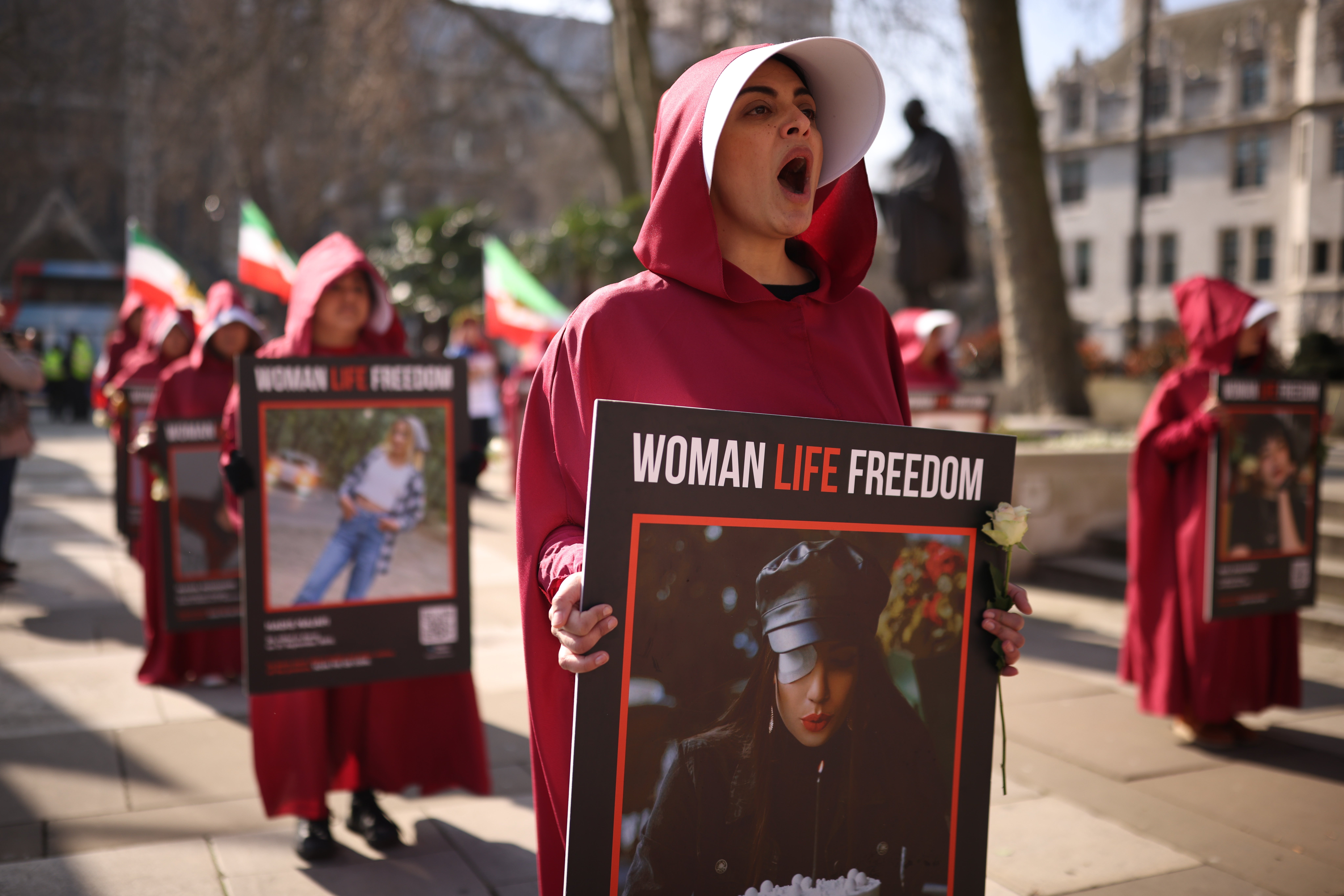ARTICLE AD BOX
If you want to understand the impact of The Handmaid’s Tale, the TV series adapted from Margaret Atwood’s 1985 novel set in the totalitarian Republic of Gilead, look no further than eBay where you can pick up a Handmaid outfit comprising a red cloak and starched white bonnet for around £30. Also available are the dowdy brown dresses worn by Gilead’s Aunts, who train and dispense beatings to the Handmaids, and the teal cloak worn by Serena Joy, the commander’s wife whom viewers will know as the woman who holds down Elisabeth Moss’s Handmaid, June, so she can be raped.
For a while after the series launched in 2017, those red Handmaid robes were international symbols of female defiance, showing up in marches in support of women’s reproductive rights in Ireland, Argentina and Trump’s America. Atwood’s imagined world, which arrived on screens as the #MeToo movement was demanding an end to male harassment and abuse, was swiftly absorbed into the lexicon of female oppression, shorthand for what happens when societal and institutional misogyny goes unchecked.
But since then, The Handmaid’s Tale has morphed from an allegory about the fragility of female freedom to a blood-soaked horror show. Little wonder it has also become a staple of Halloween cosplay, the blood-red robes now equivalent to the Ghostface masks from the Scream franchise – ideal for scaring the neighbours.
Next month, the sixth and final season of The Handmaid’s Tale arrives on British screens (it is already up and running in the US). When the series began it was largely faithful to the source material, which Atwood called “speculative fiction”, meaning it presented a “what-if” version of reality. It introduced us to the workings of Gilead, a religious patriarchy established after an environmental catastrophe where fertile women were enslaved as breeding chattels, ritually raped by their masters and forced to hand over their babies to their rapists’ barren wives. It was chilling, not least because, in an age of rising authoritarianism and the rolling back of women’s rights, it felt all too plausible.
In an ideal world, The Handmaid’s Tale would have ended at the close of that first season where, as per the novel, June was bundled into a van after refusing to stone another Handmaid to death – whether to be executed or rescued, we weren’t sure. But by this point Atwood, an executive producer on the show, had begun writing The Testaments, a sequel to The Handmaid’s Tale which picks up the story 15 years after the first book. This allowed showrunner Bruce Millar to keep going with the TV version and do whatever he saw fit with June and Gilead, so long as events eventually lined up Atwood’s sequel. (Naturally, The Testaments is already being developed for TV.)
And so came a second season, which left the novel behind and doubled down on the brutality. After the beatings and stonings of series one, we saw Handmaids bound, gagged, having their tongues cut out or lined up on a scaffold in a mock execution. We saw a pregnant June zapped by a cattle-prod, shackled and force-fed. In the Colonies, land of the “unwomen” (read: old, infertile, spent), haunted figures cleaned up radioactive waste, tumours sprouting like mushrooms from their faces.

In eight years on our screens, June has gone from being an ordinary woman reacting to horrifying circumstances to an action figure forever being thrown into yet more extreme situations in order that she might fight her way out. It has been in the show’s interests to keep her on a short leash and keep her and those she loves in mortal peril, hence her regular catapulting back to Gilead. In succumbing to the demands of bingeworthy entertainment, the series has not only swallowed its fury and reduced June to a mere action trope, it has lost sight of its fundamental feminist message and thrown logic out of the window too.
In season four, June finally escaped Gilead and was reunited with her husband, Luke, in Canada. A good place to end things, you might think. But at this point she was restyled as an avenging angel, bent on punishing her tormentors and rescuing her eldest daughter, Hannah, who was being raised by a Commander and his wife. So numerous have been the failed efforts to retrieve the little girl, you fully expect the Canadian authorities to tell June: “Sorry we didn’t get your daughter back, but we need to make another season.”

None of the series’ problems – the exhausted plotlines, the torture porn, the once effective but now repetitive close-ups of Moss’s mutinous face – would matter if this were a bog-standard thriller, rather an adaptation of a 40-year-old literary masterpiece and vital piece of social commentary. At the end of the fifth season, we saw June again separated from Luke and fleeing Toronto, where anti-immigrant and pro-Gilead protests threatened her safety. The trailer for the sixth season makes it clear she will soon be back in Gilead and once again in her red Handmaid robes. For her sake and that of Atwood’s greatest creation, the sooner she burns the place to the ground the better.
The sixth season of ‘The Handmaid’s Tale’ is on Prime Video from 3rd May









 English (US) ·
English (US) ·